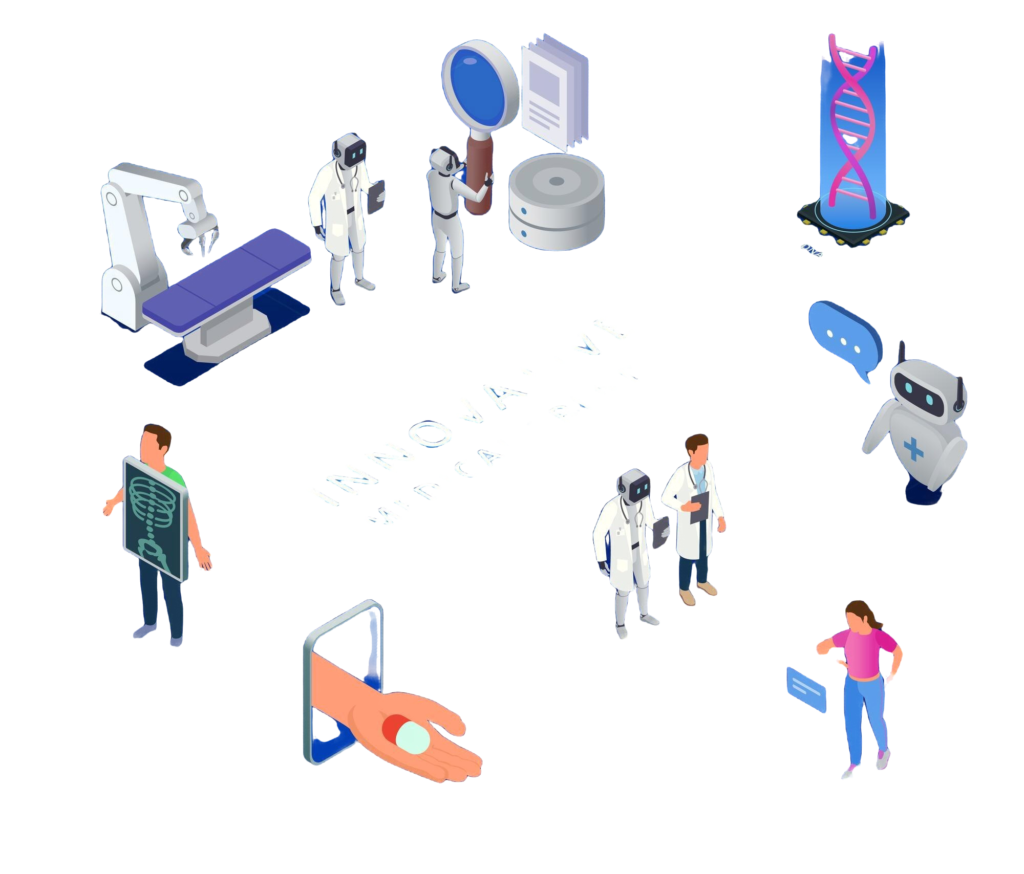The field of medicine has experienced major changes in the past few years due to advances in analog engineering, as this technology has matured. Despite the proliferation of digital technologies, analog circuits remain the engine in the development of the next generation of medical devices. Whether it is wearable health devices or implantable components, designing and implementing analog aspects ensures that satisfactory levels of accuracy, consistency, and comfort for patients are delivered.
This blog discovers how analog design has catalyzed the evolution of modern medical devices, reshaping healthcare delivery and improving patient outcomes.
The Foundation of Analog Design in Medical Devices
Analog design refers to the process of using continuous signals for the processing, amplification, and conversion of real-world phenomena like temperature, pressure, and bioelectrical signals. Analog systems do not use discrete values like digital systems but instead, capture the entire range of natural variations. Thus, analog design is indispensable in medical devices where very subtle physiological signals must be accurately measured and interpreted.
Major Features of Analog Design in Medical Devices:
- Amplifiers: Amplify weak signals from biological processes, such as heartbeats or neural activity, to become readable.
- ADCs: It converts the analog signal into a digital signal for processing in microcontrollers.
- Sensors: Sensors measure variables such as blood pressure, glucose levels, or body temperature.
- Power Management Systems: Energy efficiency and reliability in portable and implantable devices.
Enhancing Diagnostic Precision with Advanced Analog Design
The use of several sensors for wearable medical devices to constantly track biological signals that are analog by nature due to their fluctuating nature as physical changes take place requires an efficient and accurate analog front end to process the signals digitally. An AFE (analog front end) is used to capture, condition, and amplify the subtle biological signals to prepare them for digital conversion while maintaining accuracy and integrity.

Diagnostic errors may be made through inaccurate portable ECG monitors or glucose meters. In such a case, a well-engineered analog design would ensure the proper capture of signals free from noise or interference. Wearable devices need to be reliable in a variety of environments. Therefore, reducing noise and enhancing signal processing through analog circuits can greatly improve the accuracy of diagnosis in wearables.
Another reason is the superior analog design, which reduces power consumption. Wearables are designed to be used continuously on limited battery power. Optimizing how signals are captured and processed enables these devices to extend battery life without compromising accuracy, so patients can depend on them for consistent health monitoring.
Analog Design Driving Innovation in Medical Devices
- Wearable Health Monitors
Analog design has a significant dependence on wearable devices. Analog front-end circuits, through integrated sensors, are capable of recording real-time biometric information for actionable use in improving users’ health status. An example would be monitoring HRV (heart rate variability) with analog precision-circuit designs needed to measure variations in heartbeats that result from very subtle changes in the rhythms.
Analog design helps these devices consume low power but achieve high accuracy. Moreover, advanced signal processing techniques are employed to remove noise and record only relevant data to be further analyzed.
- Implantable Devices
Implantable medical devices, including pacemakers and cochlear implants, demand highly reliable and energy-efficient analog systems. These devices operate in challenging environments where they must withstand biological interference and provide uninterrupted performance over extended periods.
Analog circuits form an important role in pacemakers, by ensuring that the electrical impulses have been regulated, thereby keeping the heart beating with a steady rhythm. In cochlear implants, analog-to-digital conversion becomes vital in transfiguring sound waves into electrical signals that stimulate the auditory nerves in profoundly deaf patients.
- Diagnostic Equipment
For example, MRI machines, CT scanners, and portable ultrasound devices rely on analog design to obtain high-resolution imaging. Analog components are important in managing signal integrity and noise reduction during data acquisition, thus allowing for accurate diagnostics.
For example, in ultrasound devices, analog circuits process high-frequency sound waves to produce detailed images of internal organs. Such detailed precision allows healthcare service providers to detect abnormalities at an earlier stage, which normally brings better outcomes for the patient.
Advantages of Analog Design in Medical Devices
- Accuracy and Sensitivity
Analog circuits are very effective in capturing and processing weak physiological signals, which are usually too weak for digital systems. This is particularly important in applications such as ECG monitoring, where the difference between life and death can be made by the accuracy of signal acquisition.
- Energy Efficiency
Most medical devices, whether they are wearable or implantable, require very low energy consumption to ensure extended battery life. Many of those applications are analog and much more energy-friendly than their digital counterparts.
- Real-Time Processing
Analog circuits can be used for real-time signal processing, which is necessary for applications such as real-time blood pressure monitoring or continuous glucose tracking. This real-time nature enables timely medical interventions if required.
- Miniaturization
Advances in analog design have been able to help push toward smaller, more portable medical devices. Complex functionalities can be packed into a limited form factor using compact analog components.
Discover the cutting-edge technology that powers today’s wearables in this article from Analog Devices: The Sensors Behind the GEN II Wearable Device.

Emerging Trends in Analog Design for Medical Devices
- Low-Power Analog Circuits
Advancements in low-power analog design will allow the creation of medical devices that can last for long periods without frequent recharging or replacement of batteries, which is highly important for implantable devices.
- Integration with AI and Machine Learning
Analog-designed medical devices can provide improved diagnostic precision and predictive capacities by integrating them with AI and machine learning algorithms. For example, AI-assisted ECG monitors can perform better in diagnosing heart patterns and alert a patient of early signs of disease.
To get deeper into the cutting-edge developments in AI and machine learning, check out the latest blog post from Nanogenius: Chip Design Innovations for the Age of AI and Machine Learning.
- Flexible and Wearable Electronics
Imagine wearable devices fitted perfectly to one’s body silhouette, providing snug comfort and paying attention to our health. Flickering in the mind today, this may soon become true with flexible analog circuits. By using these circuits in next-generation wearable devices, smooth fitting and, at the same time, continuity of monitoring can occur without any drawback in comfortability or usability.
- High Sensing Technological Advances
Bio-optical and piezoelectric sensors are among the latest sensors that revolutionize how we monitor our bodies. They open doors to track more physiological parameters than ever before. Behind the scenes, advanced analog front-end circuits play a vital role in ensuring that these sensors gather accurate and reliable data, making health monitoring more precise and effective.
Increasing Reliability in Imaging and Diagnostic Systems
Imaging systems and wearable diagnostic devices depend on accurate signal processing to provide clear and accurate results. Analog design is crucial in this process because it ensures stable signal capture and transmission, which directly affects the reliability of these devices. For instance, in wearable imaging equipment, the quality of the analog circuitry can significantly impact the resolution and clarity of the images or data, which in turn influences the diagnostic outcomes.
Analog design also reduces latency in signal processing, making it appropriate for real-time monitoring where instant feedback is significant. Low latency, high-speed analog circuits enable fast and reliable responses in wearable diagnostic equipment, which is especially important in an emergency. In these situations, technology has to alert medical personnel about changes in the condition of the patient.
Besides ensuring accuracy and speed, analog design enhances the ruggedness and usability of wearables for diagnostics. Wearable diagnostic devices are normally subjected to all types of interference and environmental impacts. Analog circuits tend to be less susceptible to interference than their digital counterparts, making wearables designed with robust analogs more stable under different environmental conditions. End. Patients can count on their device’s performance in a variety of different locations or scenarios.
The Future of Analog Design in Medical Devices
- The future of analog design in medical technology can be very promising, with the increasing demand for personalized and remote healthcare.
- The areas of development will depend even more on analog circuits for precision and reliability in developing advanced medical devices.
- Breakthroughs in materials science, like graphene and nanomaterials, are certain to revolutionize sensor technology and enhance the level of performance in analog systems.
- The rise of 5G and IoT will allow medical devices with analog designs to be much more interconnected. It will ensure that data can be shared easily and patients monitored remotely.
- The increased interconnectivity will enable healthcare providers to deliver timely and effective care, even in remote areas.
- The popularity of wearable health devices points to the need for accurate, efficient, and reliable mixed-signal solutions.
- Analog design is critical to these objectives and will be a foundational technology for next-generation medical diagnostics and imaging systems.
Conclusion
Analog design is the unsung hero behind the rapid evolution of next-generation medical devices. It can accurately capture and process physiological signals, save energy, and process in real-time, making it indispensable in modern healthcare. While challenges persist, ongoing advances in analog technology and its integration with digital systems and AI promise a future where medical devices are more precise, reliable, and patient-centric than ever before. As we advance, analog design will surely stand at the very forefront of medicine, changing life and shaping its future.
Vendors, for more blogs and case studies, visit us at Nanogenius Technology.

